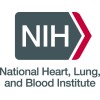
Utilizing Computed Tomographic Angiography to Evaluate Coronary Artery Disease in Patients on Long-Term...
Evaluate the Relationship Between HIV Medications and Coronary AtherosclerosisUtilizing Computed Tomographic Angiography to Evaluate Coronary Artery Disease in Patients on Long-Term Antiretroviral Therapy Intro: It is well known that HIV treated with antiretroviral drugs increases the risk for coronary artery disease. Studies have documented this with various methods including analyzing the effects of retroviral therapy on cardiac risk factors such as diabetes, lipids and hypertension. Still other studies have looked at carotid and brachial artery intimal thickness. Our study, then, aims to evaluate the relationship between HIV medications and coronary atherosclerosis using a novel method. Coronary artery CT angiography is a relatively new diagnostic procedure to evaluate heart disease in cardiac patients. We will apply this test to HIV patients on longstanding antiretroviral therapy to directly examine their coronary arteries to assess heart disease. Hypothesis: We hypothesize that HIV patients on antiretroviral therapy will have increased coronary artery disease compared to the general population. Methods: This project will be conducted in collaboration between Florida Heart Center and Associates in infectious Disease - two communities based infectious disease and cardiology practices. We will identify all the HIV positive patients seen within a 1 month timeframe at the infectious disease office. These patients will then be filtered by our exclusion/inclusion criteria. After obtaining informed consent, we will draw blood from each patient to gather lab values such as A1C, cholesterol, inflammatory markers, and other markers associated with coronary artery disease. Each enrolled patient will then schedule and receive a 64 slide coronary CTA at Florida Heart Center. The results of the CTA scans will be categorized in mild, moderate, and severe coronary artery disease. The data, then, will consist of the parameters measured on blood work, and the results of the coronary CTA. Inclusion Criteria: 1. Patients aged 35 to 50 with HIV and on retroviral therapy for at least 5 years. Exclusion Criteria: 1. Patients with prior documented coronary artery disease, heart attack, stent placement, or heart surgery. Statistical Analysis: We will conduct a multivariate analysis on the cardiac risk factors taken from patient history and the bloodwork (diabetes, lipids etc) to correlate them with the results of the CTA. We will also conduct basic analysis to support our hypothesis that long term antiretroviral therapy increases coronary artery disease. Funding: The bloodwork and CTA tests ordered in this study will be payed for by insurance companies where available. In cases where insurance companies will not pay, Florida Heart Center will pay for the CTA tests and Associates in infectious Disease will fund the bloodwork. Humans Subjects Protection: This will be a projective chart review study that will require access to protected health information. Thus, we will seek full IRB approval from the FSU IRB committee with informed consent. An informed consent document will be given to each patient explaining all the risks and benefits of the study in addition to the methods. Recruitment will be done by an office staff or medical assistant not on the research team. After patient recruitment, their medical records will be flagged for study and they will undergo the required testing. At completion of testing, their results will be recorded in the final data sheet, and their medical record will no longer be flagged for study. No identifying data will be recorded in the final data sheet, and the data will be stored in an encrypted excel sheet on a secure password protected personal laptop running antivirus and firewall. Third parties (such as family members) will not have access to any research data regardless of authorizations received from the study subjects. All the test results and labwork performed for the study will go into the patient's individual medical record at their respective offices. Thus, if an authorized third party wishes to view any test results, they can do so via the normal methods at the doctor's office.

Prospective Observational Study of Trimetazidine Influence on Mitochondrial Metabolism in Human...
Coronary Artery DiseaseTrimetazidine (1-[2,3,4-trimethoxybenzyl] piperazine dihydrochloride) is a clinically effective antianginal agent. Despite these clinical successes, the understanding of trimetazidine's mechanism of action remains incomplete, particularly influence of trimetazidine on mitochondrial function in isolated human cardiomyocytes. The investigators will perform this study to seek possible differences in mitochondrial respiration related to standard preoperative enrolled trimetazidine therapy.

RESOLUTE China Registry:
Ischemic Heart DiseaseStenotic Coronary Lesion3 moreTo document the safety and overall clinical performance of the Resolute Zotarolimus-Eluting Coronary Stent System in a real-world patient population requiring stent implantation.

Galectin-3 Binding Protein in Cardiovascular Disease and Chronic Heart Failure
Heart FailureCardiomyopathies1 moreThe purpose of this study is to determine whether galectin-3 binding protein plasma levels can predict adverse cardiovascular events in patients with coronary artery disease and/or heart failure.

e-BioMatrix PostMarket Registry
Coronary Artery DiseaseThe purpose of this registry is to capture clinical data of the BioMatrix™ and BioMatrix Flex™ (Biolimus A9™-Eluting) stent systems in relation to safety and effectiveness.

Radiation Dose From Computed Tomography Before and After Implementation of a High Pitch Dual Spiral...
Atherosclerosis of Coronary ArteryCardiovascular Disease2 moreThe purpose of this study is to compare the radiation exposure of a variety of chest CT examinations performed on the current state of the art CT scanners (64 slice, dual source CT scanner) with the radiation exposure for identical chest CT examinations performed on the Siemens Flash CT scanner (high pitch dual source spiral technique).

Health Coaching to Promote Physical Activity for Coronary Heart Disease Prevention
Coronary DiseaseAtherosclerosisThe purpose of this study is to evaluate the efficacy of motivational interviewing-based coaching to increase physical activity to achieve guidelines recommendations for cardiovascular disease prevention.

Role of CYP2C19 Polymorphism in the Drug Interaction Between Clopidogrel and Omeprazole
Coronary Artery DiseaseClopidogrel, an inhibitor of ADP induced platelet aggregation and activation, is one of the most commonly used drugs in patients with cardiovascular disease. The specific aim of the proposed study is to determine whether the interaction between proton-pump inhibitors (PPIs) and clopidogrel is dependent on CYP2C19 haplotype.

Cardiac MRI for Patients Enrolled in INFUSE-AMI
Acute Myocardial InfarctionCoronary Artery Disease3 moreBackground: INFUSE AMI is an ongoing clinical trial examining how patients with heart attacks are treated. The study's aim is to help determine the best way to treat patients with specific kinds of heart attacks caused by blood clots. To evaluate the effect of the heart attack on the heart tissue and function, participants in the INFUSE-AMI study will have magnetic resonance imaging (MRI) scans of the heart at specific times after their heart attack. Objectives: - To perform cardiac MRI scans on patients who are participating in the INFUSE-AMI study. Eligibility: - Individuals at least 18 years of age who are enrolled in the INFUSE-AMI study. Design: Participants will have an MRI scan of the heart about 5 days and between 23 and 44 days after their heart attack. The MRI scan at day 5 is optional. Participants will provide a blood sample prior to the MRI scan. During the scan, participants will be given a contrast drug to show the blood flow to and within the heart. An electrocardiogram will be used to monitor the heart during the procedure. No other treatment will be provided in this protocol.

The Effect of Ischaemic-Reperfusion and Ischaemic Preconditioning on the Endogenous Fibrinolysis...
Ischaemic Heart DiseasesHeart attacks are usually caused by a blood clot blocking an artery supplying blood to the heart. Current treatments are designed at relieving this blockage as quickly as possible to minimise damage to the heart muscle. However in restoring the supply of blood local damage known as "ischaemia-reperfusion injury" may occur. The aim of this study is to assess how clot forming and clot dissolving pathways are affected during this process, and examine the role of a natural inflammatory hormone, bradykinin. This will help us to understand the mechanism by which ischaemia-reperfusion injury may occur and to devise new treatments for heart attacks.
